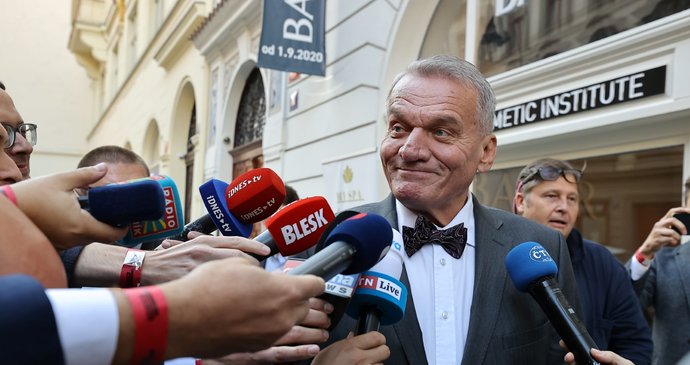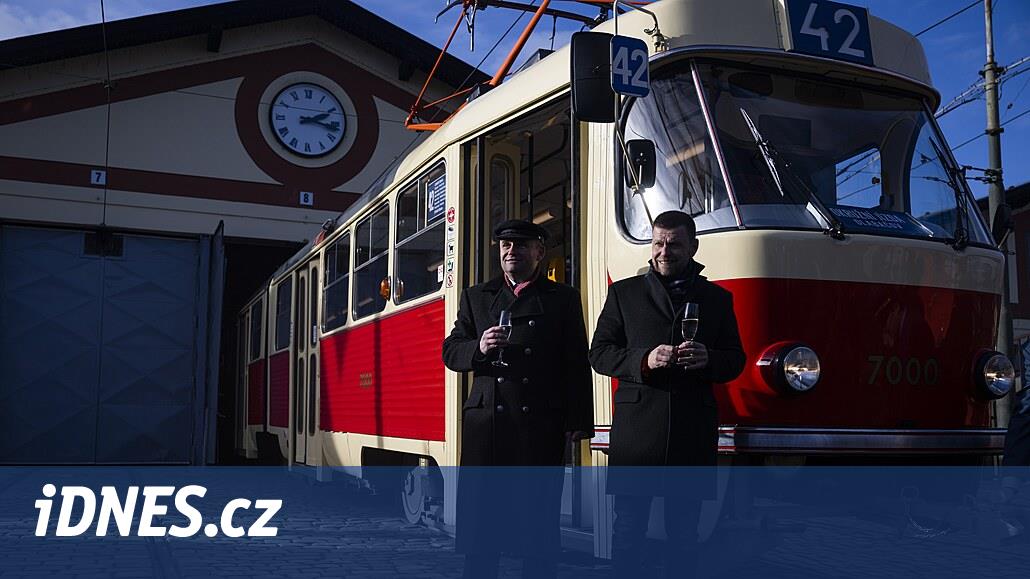She survived the war and the devastating floods. Recall 90 years of history of the Prague Zoo
If we want to look back at the very beginning of the efforts to build a modern zoo in Prague, we must add 50 years of futile attempts to the 90 years that have passed since its opening and prepare for the construction that required it. Yes, half a century has passed since the initial impulse to the opening of the garden.
Half a century of experiments
The history of the Prague Zoo dates back to 1881, when Count Sweerts-Sporek called on the newspapers to establish a zoo in Prague on the occasion of the marriage of Prince Rudolf and the Belgian Princess Štěpánka. The call was published on February 11 of that year by the Prague daily Prager Tagblatt, but nothing much happened. Although the first few reactions and financial contributions appeared, they were not enough to establish.
Ten years later, a committee was set up in Prague to establish a zoo in the Royal Game Reserve, which had been considered a suitable place since 1886, but even these plans did not grow into implementation.
The Cooperative’s efforts to establish a zoological and acclimatization garden were also wasted, and a commemorative file from 1889 has been preserved. it’s over.
Praguers were able to visit a kind of great-grandfather of the future zoo for the first time in 1896, when a bird aviary with a pond and probably a monkey that was never put into operation was established at Letná. They could visit this attraction for ten years until 1906, then it disappeared again.
At that time, however, a personality had already entered the scene, who was able to give the intention to create a Prague zoo a clearer goal and direction. It was a high school professor Jiří Janda, later the first director of the zoo, who was commissioned to prepare the garden by the then mayor of Prague. Janda started preparing a zoo on the Vltava island of Štvanice, but before any of his plans came true, the First World War broke out.
After the establishment of the independent Czechoslovak Republic, plans to build a zoo came to life again. The preparatory work was undertaken by a commission elected in 1919 at a meeting of the Advisory Board of Mathematics and Science at the Ministry of Education and National Enlightenment, and in 1922 the place where the zoo was later established finally appeared: the land in Troy, donated by landowner Alois Svoboda.
The ministry again entrusted Professor Jiří Janda with the head of the preparatory work, and things finally began to move. In 1926, the Zoological Garden Housing, Shopping and Construction Cooperative was established, and a year later eight hectares of the future garden were fenced. In 1930, the still non-existent zoo received its first exotic animal exhibit:
“Because the zoo did not yet have a suitable location, this lioness, like some other future inhabitants of the zoo, lived in the Trojan villa of Professor Janda,” the Prague Zoo recalls in its pages.
The zoo is starting to work
And then came Monday, September 28, 1931. The twenty-four-hectare zoo construction site was open to the public and its gate was the first visitors in sunny weather. At that time, an administrative building was built at the main entrance and Jand’s aviary of birds of prey.
The first valuable animal specimens also appeared in the zoo: one of them was the Lotta wolf, a female Eurasian wolf, the other a pair of ungulates, which later became the most famous and internationally known symbol of the Prague Zoo – Převalský horses, representatives of the only surviving wild horse Asian stony steppes and semi-desert. The first two horses in the Prague Zoo were named Minka and Ali.
The following year came the arrival of the first tigers Mitau and Bengali, then the baby elephant, the hippo Peter and the rhino Max. And the zoo recorded its first addition, because tigers gave birth to cubs.
A year later, the already mentioned lioness Šárka moved to the zoo, which got alongside the male Ctirada. And with his little bit of the mill, there was also a great admirer and admirer of animals, actor Vlasta Burian, who donated a pair of Californian sea lions to Hyt and Batula in the garden.
The beast pavilion was established in 1935, and two years later the Prague Zoo celebrated its first great international success, when it was the first in the world to breed captive Andean condor cubs in captivity.
Animals during the war
The war years 1939 to 1945 significantly reduced the development of Prague, but the number of animals did not decrease much. This was due to the fact that the zoo developed a war “local” farm, which grew various vegetables, alfalfa, grass, corn and other crops, so that the garden became almost self-sufficient in terms of feed. Meat for carnivores and other carnivorous animals was imported mainly from rural slaughterhouses.
In addition, a group of prominent scientists and technicians gathered at the zoo, who may have been looking for an escape from the harsh reality in that they planned and proposed another concept for its magnificent development (which really helped the development of the Prague Zoo after the war).
In 1940, the construction of farm buildings (referred to as the “farm”) began, which still serves to this day. However, for the first time, the zoo was hit by a destructive natural element in the form of the flooded Vltava. The March flood sank its entire lower part, the water reaching as far as the beast pavilion.
From 1944, the number of animals in the Prague Zoo began to grow due to the evacuation of fauna from German zoos, endangered carpet raids. One of the most famous representatives of these “refugees” became the legendary hippo Zuzana, who came to Prague from bombed-out Berlin and remained in the Czech capital until the end of her life. There were also a couple of adult lions and three young lions, a pair of Nilgau antelopes, a pair of guanaco llamas, several ponies, tame llamas, both bison and other animals. He comes from the zoo in Dresden, affected mainly by heavy bombing in February 1944.
After the liberation in June 1945, the state of animals in the Prague Zoo numbered 1,022 individuals, of which 251 were mammals, 580 birds and 201 reptiles, amphibians, fish and invertebrates.
Post-war development
Soon after the end of the war, according to the “war” development plan, the first building was started – at most – pavilions and other exhibitions. The first major project was the Monkey Pavilion, which stood on the site of today’s Indonesian Jungle Pavilion. When completed in 1949, it was one of the most modern buildings of its kind. Its first inhabitants were macaques (rhesus, bear and others), Capuchin monkey, green vervet and many other species of monkeys and apes. The female ape appeared as the first ape in 1951.
At the turn of the 1940s and 1950s, a pavilion was created, which is referred to in period dailies as the “house of mammals” and which gradually bore various names – the pavilion of exotic mammals, rare mammals and small animals. Today you know it as the Africa Pavilion up close. The pavilion was part of the Czechoslovak and European exhibition with an exceptional concept of indoor exhibition. Along the south wall there were indoor quarters for medium-sized mammals, while on the north wall there were showcases with numerous invertebrates. Some of the animal species that passed through it were real rarities (four-toed anteater, several species of armadillos, kynkazu, a large group of hedgehogs and many others).
Around 1952, the first giraffe pavilion was erected, which still stands today, although the giraffes have long since moved out. Its low part, formed by antelope stables, was moved here as the remains of a circus tent. It stood on Letná, but it burned down and only the stables survived. The first giraffe to inhabit this pavilion in August 1954 was the Maasai giraffe Lenka. She was later replaced by a pair of Cordofan giraffes from Antwerp. The first Rothschild giraffes bred by the Prague Zoo today came in 1970 and came from the famous African animal transports of Zdeněk Vágner, the director of the zoo in Dvůr Králové nad Labem.
In 1956, another exceptional building was opened, namely the waterfowl pavilion, which was designed as a pass-through and barrier-free at its inception. It served until 1988, when it had to be closed due to poor technical condition. After the floods in 2002, which completed the work of destruction, it was reconstructed exactly in its original form.
Floods in 2002: a disaster, but also an impulse
The already mentioned floods of August 2002 meant not only another major intervention in the operation of the garden, but paradoxically also an impulse for its new development. But the beginning was ugly; the water flooded almost half of the area. According to the then director Petr Fejk, the zoo did not have sufficient information about the size of the flood wave in time, it only counted on 50 years of water. Therefore, the full evacuation of the lower part of the garden started relatively late and some animals could no longer be moved to safety.
The biggest problem was the evacuation of the pavilion of large mammals. The aggressive male elephant Kadir, who was in danger of swimming and endangering the public, must have been killed. It was not possible to evacuate even three hippos. The female Barborka drowned, another female Lentilka was killed when she threatened to swim. Slavek’s male survived, and after two days her nurses found her on the floor of the pavilion where her water had washed.
A few Liberian hippos also died. Two elephants were rescued, which could be removed from the flooded pavilion and which were tied into makeshift boxes near the main entrance.
The gorillas were moved to a flood tower. otherwise, however, the water rises there as well, and it was necessary to proceed with the evacuation using rubber boats. However, the male Pong, who was not found in the tower, could not be saved. A lion, Bert, was killed from large carnivores, and one bear evacuating was judged to be too risky.
The symbol of the flood then became the sea lion Gaston, which swam along the Vltava and managed to capture it only near Dresden, while its entire anabasis was watched by television cameras. However, he died during the transport back due to great exhaustion. In the lower part of the zoo it has an originally designed underwater monument.
In total, the zoo lost 134 animals, and the material damage exceeded 230 million crowns. Some of the affected objects were awaiting demolition. Instead of damaged buildings, however, several unique buildings have been erected in Troja, which, with their concept, are close to a new view of the functionality and meaning of zoos.



